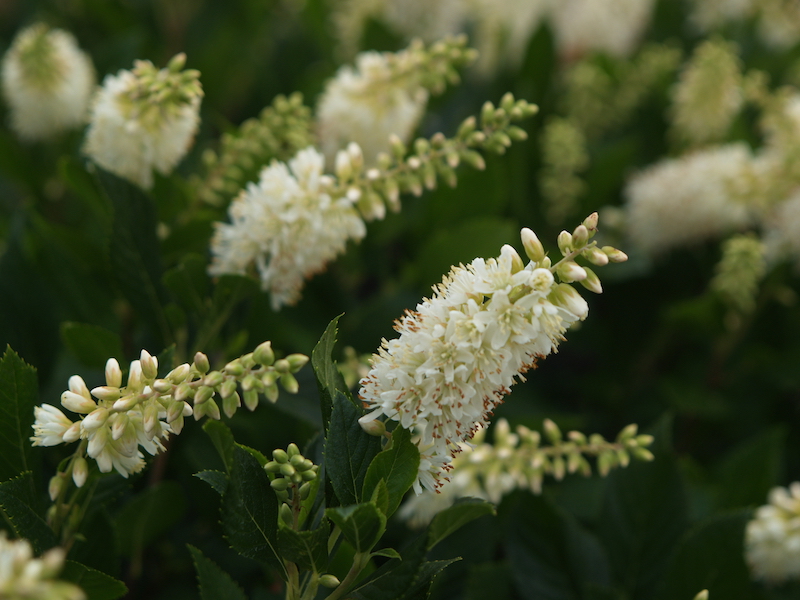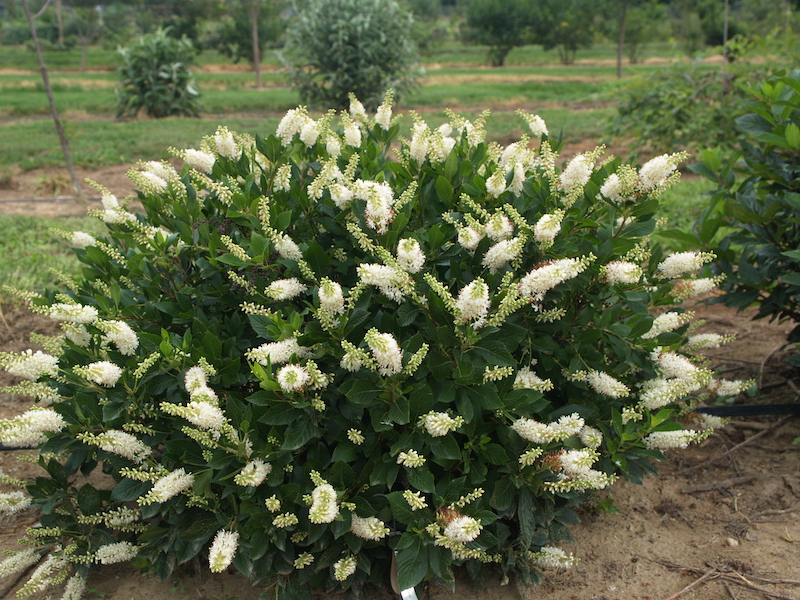Growing Summersweet
With aromatic white or pink flowers growing in delicate arching clusters atop shiny, vibrant green leaves, the late-summer blooming Summersweet (Clethra alnifolia) requires little more care than regular watering. This North American native shrub is grown in zones 3-9 depending on variety, making it relatively cold hardy and able to thrive in many regions.
Summersweet withstands different soil types so it can be easily placed into your garden without much hassle. Depending on variety, Summersweet can grow in areas of full sun to shade, making it a go-to for the gardener looking to usher in autumn with a pollinator-attracting, deer-resistant, and moderately-sized (2-7 feet tall and wide) shrub.

Planting Plant Summersweet
Summersweet is native to swampy areas and is adaptable to many different soil types, though it prefers slightly acidic soil. Summersweet can be used in rain gardens, around ponds, and in marshy areas because of its tolerance of damp and even salty soils. Plant Summersweet where it can get adequate light, receive regular water, and has plenty of room to grow as some varieties can reach up to six feet wide. Summersweet is generally not tolerant to long periods of drought, so be sure to plant in an area that does not become too hot or dry. In warmer regions, this may mean finding a space that receives a bit of shade in the afternoon.
When planting, dig a hole at least twice the width and the same depth as the root ball. If your soil is particularly rocky, clay-y, or will not retain moisture, amend the soil with compost or soil conditioner. Once planted, water deeply, ensuring that the entire root ball and surrounding soil is thoroughly moist. Water again once the surface has dried.

Watering Plant Summersweet
While some varieties of Summersweet are more drought tolerant than others, you will want to maintain a consistent watering schedule to keep this shrub healthy. Regular deep watering during the first year of growing Summersweet will help it produce deep roots, aiding in its ability to withstand drought. Even when established, water Summersweet deeply in the hottest, driest parts of the year. Using an irrigation system may be preferred when growing Summersweet in hot, dry regions. Adding a generous amount of mulch around this shrub will also help keep the soil moist as well as suppress weeds.
Fertilizing Plant Summersweet
Summersweet is a light feeder, meaning it does not need strong or regular fertilizer applications. In the early spring, apply a slow-release fertilizer made for trees and shrubs around the base of the plant. Slow-release fertilizers are ideal for shrubs like Summersweet because they provide nutrients throughout the spring and summer when perennials and shrubs are growing the most, without causing legginess or detracting from their blooms.
Pruning Plant Summersweet
Summersweet blooms on new growth. For this reason, pruning can be done in late winter or early spring just as the leaves start to emerge. Pruning will help Summersweet put energy into new growth, which will ultimately help to produce bountiful blooms. Throughout the year, you can remove damaged or dead portions of Summersweet as needed. Spent blooms can be trimmed off in the fall to give Summersweet a cleaner look or be left on the plant for some winter interest.
Caring For Plant Summersweet in Pots
Despite its potential to grow into a moderately large shrub when mature, Summersweet is generally slow growing and can therefore live in a large pot or planter for a couple of years. Summersweet in pots needs consistently moist soil, so it is important to plant them in a moisture-retaining potting soil or potting mix. Be sure to choose a large pot with drainage holes and check the soil moisture regularly. In the winter, bring the pot into a garage or basement to protect the roots from excessive cold.
Winter Care for Plant Summersweet
Summersweet is a deciduous shrub that will lose its leaves during the winter. Summersweet is cold hardy in zones 3-9, meaning it will go dormant and be able to survive an average winter within those regions. Adding mulch around perennials and shrubs will help keep their roots protected from extreme temperatures.
 |
Author Lynn Gusman - Published 1-13-2023 |
